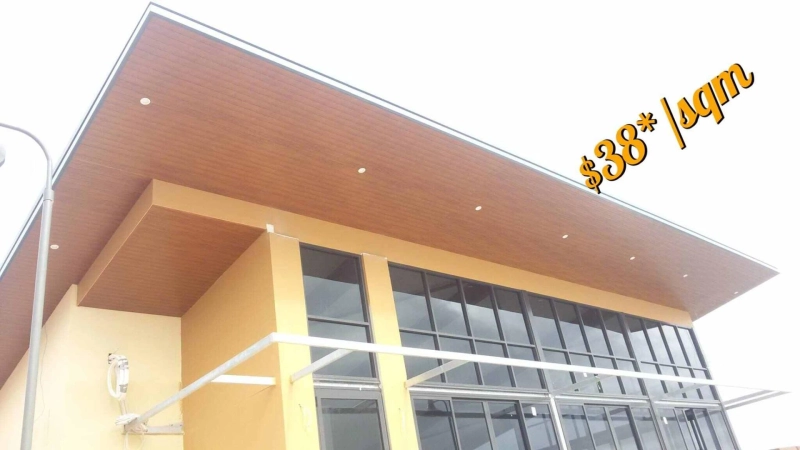Windows have long been regarded as the eyes of a home, offering a view to the outside world while protecting us from its elements. However, as technology advances and our awareness of energy efficiency grows, the future of windows is evolving rapidly. Double glazing in Perth, once a novel concept, has now become a standard in modern construction. In this article, we'll explore the future of windows, focusing on the benefits and innovations associated with double glazing.
The Origins of Double Glazing
To understand the future of windows, we must first delve into their past. Double glazing, also known as insulated glazing, originated in the mid-20th century. It involves the use of two glass panes separated by a sealed air or gas-filled gap. This design was initially developed to enhance thermal insulation and reduce heat loss in buildings. Over the years, double glazing has evolved to offer numerous advantages beyond just energy efficiency.
Energy Efficiency: The Driving Force
One of the key factors propelling the future of windows towards double glazing is its remarkable energy-saving properties. Traditional single-pane windows are notorious for letting heat escape during the winter and allowing heat to penetrate during the summer, resulting in increased energy bills. In contrast, double glazing acts as a thermal barrier, significantly reducing heat transfer. This leads to lower heating and cooling costs, making homes more sustainable and environmentally friendly.
Innovations in Energy Efficiency
The future of windows will see even more innovative approaches to energy efficiency. Smart windows, for instance, can dynamically adjust their transparency based on external conditions. They can darken to block excessive sunlight during hot days or become transparent to harness natural light in cold weather, optimizing energy consumption and comfort.
Moreover, emerging technologies like electrochromic and thermochromic glass promise to revolutionize energy-efficient windows. Electrochromic glass allows users to adjust the tint of their windows with the touch of a button, providing instant shade and privacy while maintaining natural light. Thermochromic glass responds to temperature changes, darkening in the heat to block sunlight and lightening in the cold to absorb heat, further reducing energy usage.
Enhancing Comfort and Wellbeing
The future of windows extends beyond energy efficiency; it also encompasses our comfort and wellbeing. Double glazed windows in Perth play a pivotal role in creating a healthier living environment by mitigating outside noise pollution in Perth. Noise-reducing laminated glass, combined with the insulation properties of double glazed windows, transforms our homes into tranquil retreats from the hustle and bustle of the outside world.
Furthermore, double glazed windows help maintain stable indoor temperatures, reducing the likelihood of condensation and mold growth. This leads to improved air quality and a healthier living space. The future may also bring advancements like self-cleaning windows, eliminating the need for arduous maintenance and ensuring clear views year-round.
Security and Safety
Security is a paramount concern for homeowners, and the future of windows includes innovative solutions to address this need. Laminated glass, often used in double glazing, is incredibly tough and difficult to break. This not only deters potential intruders but also provides protection against accidents, such as shattered glass during storms.
In the coming years, we can expect to see the integration of smart technology into windows, allowing for remote monitoring and control. This will enhance security by providing homeowners with real-time updates on their windows' status, whether they are open, closed, or locked. Some smart windows can even detect potential intrusions and alert homeowners or security services.
Aesthetics and Design
Windows are not just functional; they also contribute significantly to a building's aesthetics. The future of windows will continue to emphasize design, offering a wide range of customizable options. Double glazing can be adapted to various architectural styles, from traditional to ultra-modern, with choices in frame materials, colors, and finishes.
Additionally, the advent of frameless and floor-to-ceiling window designs is gaining popularity, creating seamless connections between indoor and outdoor spaces. This design trend not only enhances the aesthetics of a building but also promotes the well-being of its occupants by increasing natural light and providing unobstructed views of the surroundings.
Conclusion
As we step into the future of windows, double glazing stands as a cornerstone of modernity. Its multifaceted benefits, from energy efficiency and comfort to security and aesthetics, make it an indispensable feature of contemporary architecture. Innovations in materials and technologies will continue to shape the windows of tomorrow, offering homeowners an array of options to enhance their homes in both form and function.
Embracing the future of windows means embracing a more sustainable, secure, and comfortable living environment. Whether it's through energy-efficient smart windows, noise-reducing laminated glass, or cutting-edge design concepts, the future of windows is undoubtedly bright, offering endless possibilities for homeowners and architects alike to create spaces that are both functional and beautiful. Double glazing is not just a window into the future; it's a path to a more modern and efficient way of living.


